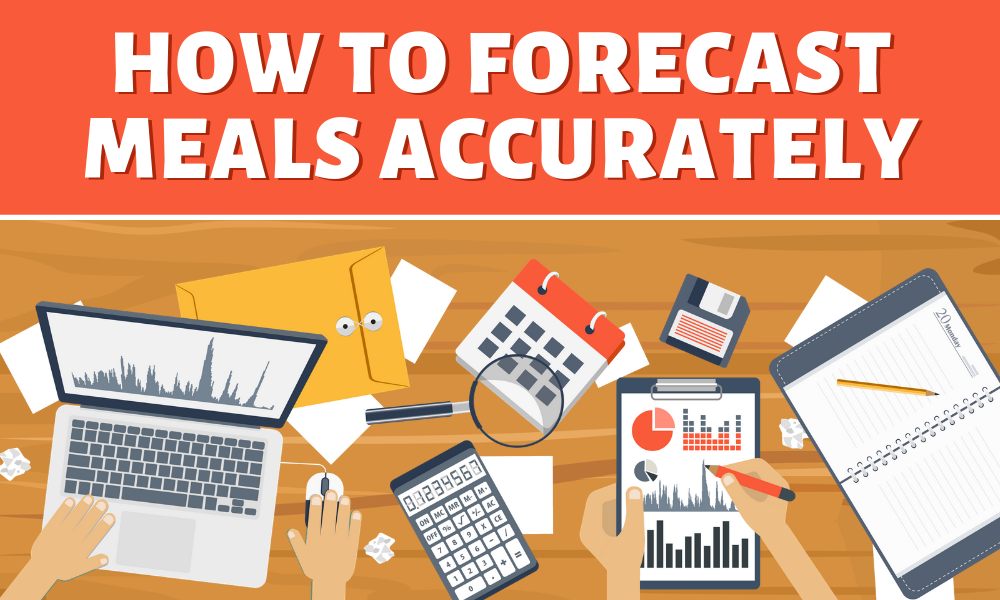Menu Planning Tips: Menu Forecasting
By Laura Thompson I May 31, 2019

Accurate menu forecasting will help you reduce costs and increase revenue. In order to produce accurate menu forecasts you need to understand the underlying components including food costs, labor costs, item popularity, and seasonality. Answering the following questions may help:
Knowing the answers to these questions is crucial for careful meal planning and forecasting. Accurate analysis will help protect against overproduction, reduce excess leftovers and wasted food, and decrease wasted labor time.
Forecasting isn’t just trying to find that ‘magic’ number of meals to prepare without waste. It is making sure that materials, time, and labor are also not wasted preparing items that are unpopular and won’t sell. Menu forecasting protects against overproduction of food which requires more preparation, extra ingredients, and increased labor hours, all of which incur extra costs. Additionally, forecasting allows menu entrees and sides to be paired based on popularity so that sales and revenue are increased.
In menu forecasting approach, it is important to balance considerations for overproduction with desire for revenue. For example, excessive focus on reducing overproduction can threaten meeting student demands and reduce customer satisfaction, and therefore revenue. Alternately, focus on revenue may result in overproduction. As food service administrators develop a more accurate food forecast, they become closer to finding that perfect balance between reducing costs and generating revenue, which ultimately results in a successful food service program.
This leads to the big question: How do I forecast meals accurately?
1. Understand what the menu forecast represents: Customer/Student demand.
Exactly how much of each item should be prepared so that every person participating can choose what they want, without overproduction?
- Ensure your historical data is accurate.
Are production records filled out completely and consistently? Health-e Pro’s Dashboard gives a real-time report identifying what production records are complete or incomplete for the week. The Completed Production Records report providesan at-a-glance view as to whether or not production records are filled out at each site. Food service administrators can quickly identify missing information and request that information be submitted.
- Run a detailed analysis of your menu service history.
In order to make truly effective forecasting decisions, it is important to gather historical data and analyze it for costs, trends, and details about consumption of each item. But who has time to do that when every bit of effort goes into just creating the menu and preparing it each day? Detailed data analysis is a completely separate job and requires a significant amount of time to gather and calculate.
Fortunately, it is easy to access detailed analysis through Health-e Pro’s Usage Report. It provides a perfect summary of menu forecasting accuracy. Look at any menu or recipe to see what was offered, served, leftover, or wasted over a period of time. Determine if overproduction or waste is increasing, decreasing, or fluctuating based on season or competing menu items. Determine what efforts can be made to reduce leftovers and waste based on those trends.
The Health-e Pro Dashboard is also set up to review the results of menu forecasting at a glance. This provides a data analysis of forecasting and preparation information from production records retained within the system. As long as production records are filled out consistently, food service administrators have a variety of historical reports right at their fingertips. Through this, they can make informed decisions about how to plan and accurately forecast school menus for a successful program.
Here is a list of how the Health-e Pro Dashboard can organize your historical data for the most accurate menu forecasting:
Prepared/Served Report:
Average Food Cost:
Meals per Labor Hour:
Menu Popularity:
- Forecast with confidence!
Success comes with gaining an understanding, developing skills, and gaining an expertise on any given subject. Take the time to gain a unique understanding of past forecasting trends and the many facets of developing an accurate menu forecast. Develop skills to refine production in each aspect, reducing waste and maximizing student/customer satisfaction. By utilizing the steps detailed above, you can be well on your way to reducing costs, increasing revenues, and improving your bottom line.
